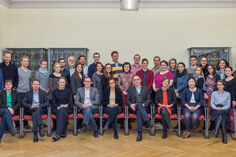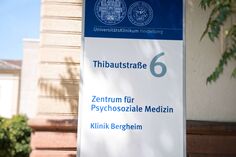Ethnicity-independent genetic basis of functional psychoses: a genotype-to-phenotype approach.
Stassen HH, Bridler R, Hell D, Weisbrod M, Scharfetter C.The functional psychoses schizophrenia, schizoaffective disorder, and bipolar illness represent complex clinical syndromes that are characterized by phenotypic heterogeneity. Yet evidence from numerous studies suggests that (1) the prevalence of schizophrenia and bipolar illness is with 1% very similar across ethnicities, and (2) a strong genetic component is involved in the disorders' pathogenesis. Using data from different US-American ethnicities (77 families with a total of 17 unaffected and 170 affected sib pairs; 276 marker loci), we searched for ethnicity-independent oligogenic susceptibility loci for which the between-sib genetic similarity in affected sib pairs deviated from the expected values. Specifically, we addressed the question of the extent to which genetic risk factors and their interactions constitute multigenic inheritance of functional psychoses across populations and might constitute universal targets for treatment. Our novel multivariate genotype-to-phenotype search strategy was based on a genetic similarity function that allowed us to quantify the inter-individual genetic distances d(x(i), x(j)) between the allelic genotype patterns x(i), x(j) of any two subjects i, j with respect to n loci l(1), l(2), em leader l(n). Thus, we were able to assess the between-ethnicity, the within-ethnicity, and the within-family genetic similarities. The problem of ethnicity-independent vulnerability was addressed by treating the Afro-American families as "training" samples, while the non-Afro-American families served as independent "test" samples. We evaluated the between-sib similarities, which were expected to deviate from "0.5" in affected sib pairs if the region of interest contained markers close to vulnerability genes. The reference value "0.5" was derived from the parent-offspring similarities that are always 0.5, irrespective of the affection status of parents and offspring. We found 12 vulnerability loci on chromosomes 1, 4, 5, 6, 13, 14, 18, and 20, that were reproducible across the two samples under comparison and therefore, likely to constitute an ethnicity-independent, oligogenic vulnerability model of functional psychoses. The elevated vulnerability appeared to be unspecific and to act in such a way that exogenous factors become more likely to trigger the onset of psychiatric illnesses. Copyright 2003 Wiley-Liss, Inc.




